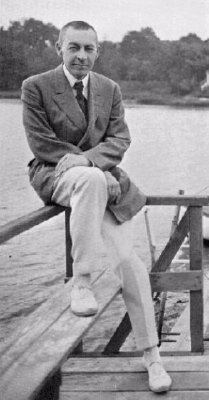|
||
|
Sergei Rachmaninoff was born into a wealthy Russian family with a country estate situated near Lake Ilmen in the Novgorod region of Russia. However, he was not destined to enjoy the life of the landed gentry. His father, a retired army officer, lost the entire family fortune through disastrous financial ventures and subsequently deserted the family. Sergei's cousin, Aleksandr Siloti, who was a well-known concert pianist and conductor, recognised his considerable musical abilities and arranged for him to study piano with the noted teacher and pianist Nikolay Zverev in Moscow. Under Zverev's strict tutelage Sergei gradually grew into one of the greatest piano virtuosos of his time. Later he studied music at the Moscow Conservatory, graduating at the age of 19 and winning a gold medal for his one-act opera Aleko. Despite his considerable abilities as both a composer and pianist the young Rachmaninoff was continually plagued by self doubt and depression. Following the failure of his first Symphony in March 1897 and an unhappy love affair, he sought treatment from a psychiatrist Nikolay Dahl who is often credited with having restored his self-confidence, and enabling him to write the Second Piano Concerto. Around the same time he married his cousin Natalie Satin. By 1905 Rachmaninoff had established an international reputation as a pianist and composer and held an appointment as a conductor at the Bolshoi ballet. However he was clearly worried by the revolutionary fervour that was spreading through Russia, and in 1906 he moved with his family to Dresden where he enjoyed one of the most fertile periods of his creative life, composing among other things his second symphony, the Isle of the Dead and his third piano concerto. He returned to Moscow in 1910, but when the revolution finally came in 1917 he left Russia for ever making his home in the United States of America. During the last twenty five years of his life he continued to give piano recitals, but otherwise became rather reclusive. He never learned to speak English fluently and lived primarily with his immediate family and a small circle of friends. Although he was less productive as a composer during this period, his works include two of his greatest masterpieces: the Rhapsody on a theme of Paganni and the Symphonic Dances. Despite failing health he embarked on an arduous concert tour in the winter of 1942-3, donating all the proceeds to war relief. After playing in Knoxville, Tennessee, on 15 February he became seriously ill and died in Beverley Hills 28 March. The vocalise was originally written around 1912 and was published as the last of a set of fourteen songs. The first thirteen songs were set to poems written by Russian romantic poets including Pushkin, Polonsky, Korinfsky and Shaginyan. In contrast the vocalise was written without words relying for its success entirely on the beauty of the melodic line. It quickly became the most successful song of the set and has remained one of his most popular compositions. Rachmaninoff revised it in 1915 and made several arrangements including ones for solo piano, violin and piano and orchestra. Other arrangers have made versions for many other instrumental combinations including piano duet, cello and clarinet. The piece is in simple binary from with a short coda. Rachmaninoff's Vocalise was performed, in the composer's version for violin and orchestra, by the Portobello Orchestra on the 10th December 2005, with soloist Madeleine Easton and conductor Anthony Weeden, and on the 6th April 2019, with soloist George Mattar and Conductor Sam Jones. back |

